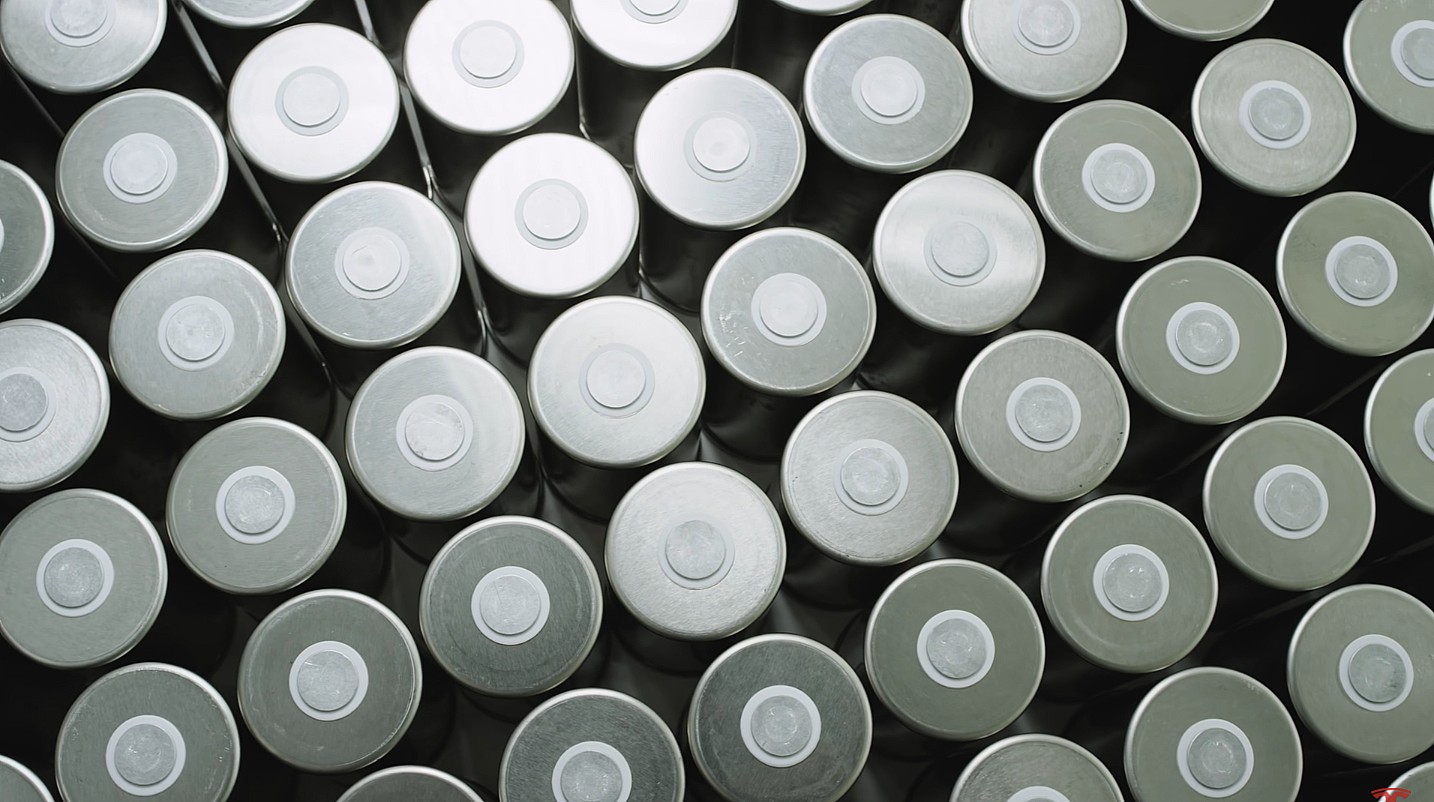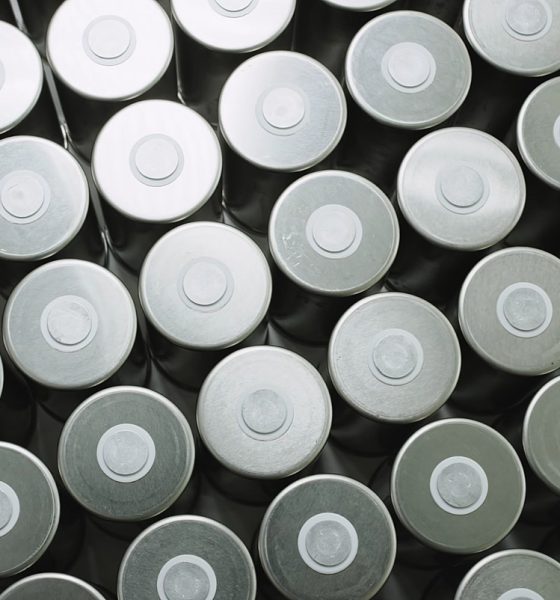A chairman from China-based battery giant Contemporary Amperex Technology Co. Limited (CATL) recently cast doubt on Tesla’s 4680 battery cell, saying that he didn’t think it would be successful in the long run.
In a conversation earlier this year, CATL Chairman Robin Zeng told Elon Musk that the cylindrical 4680 battery “is going to fail and never be successful,” according to a report from Reuters this week. Zeng made the statements to Musk in a meeting with the Tesla CEO on his Beijing visit in April, and the chairman also said that the Tesla CEO was better equipped to handle other technologies than battery cells.
“We had a very big debate, and I showed him,” Zeng said. “He was silent. He doesn’t know how to make a battery. It’s about electrochemistry. He’s good for the chips, the software, the hardware, the mechanical things.”
Tesla working on four dry cathode 4680 battery variants: The Information
Tesla’s 4680 battery cell and CATL licensing
In September, Tesla announced that it had produced its 100 millionth 4680 battery cell at Gigafactory Texas, after reaching 50 million units in June. The company is also in the process of expanding its Gigafactory Nevada to add a dedicated 4680 cell production facility, expected to ramp up to 500 GWh in the long term.
The report also highlights a licensing deal Tesla has with CATL for technology related to producing batteries in Nevada, expected to officially launch in 2025, according to a person with knowledge of the matter who spoke to Reuters under the condition of anonymity.
Zeng on FSD Supervised and Musk’s promise timelines
In addition to discussing battery technology, the chairman said that he and Musk talked about the company’s focus on autonomy, adding that he agrees with Tesla’s overall approach to the topic. Unlike other companies that are developing self-driving systems, Tesla’s Supervised Full Self-Driving (FSD) only utilizes cameras as sensors, rather than using multiple layers of different redundant technologies.
“He’s all in,” Zeng told Reuters regarding Musk and Tesla’s FSD strategy in a statement earlier this month. “I think it’s a good direction.”
Despite his support for the company’s approach to FSD Supervised, Zeng also noted that he thinks Musk tends to set unrealistic timelines for new vehicle technologies, and he even asked the Tesla CEO during the April conversation, saying two-year timelines may as well be “infinity.”
“His problem is overpromising. I talked to him,” the chairman added. “Maybe something needs five years. But he says two years. I definitely asked him why. He told me he wanted to push people.”
Musk has addressed criticisms of his timelines before, pointing to his optimism as a necessary part of his accomplishments.
While certainly not perfect, my batting average for most predictions is quite good.
My schedule optimism, without which I probably wouldn’t even have tried to do many endeavors, gets the best of me sometimes, but I always deliver in the end.— Elon Musk (@elonmusk) December 30, 2023
“Now, admittedly I’m a little optimistic sometimes,” Musk said during this year’s Annual Shareholders Meeting. “You know, I don’t have a complete lack of self awareness. But if I wasn’t optimistic, this wouldn’t exist this factory wouldn’t exist.”
The CEO later went on to add that he believes he’s been “pathologically optimistic from birth.”
CATL hopes for U.S. factory under Trump
CATL also told Reuters that it would build a U.S. production facility if President-elect Donald Trump would allow it.
“Originally, when we wanted to invest in the U.S., the U.S. government said no,” Zeng said. “For me, I’m really open-minded.”
“I do hope that in the future they are open to investments,” the chairman added.
In August, Trump expressed that he would be open to Chinese companies building factories in the U.S., despite the country’s recent passage of a 100-percent tariff on electric vehicle (EV) imports.
“We’re going to give incentives, and if China and other countries want to come here and sell the cars, they’re going to build plants here, and they’re going to hire our workers,” Trump said in a statement to the publication in August.
What are your thoughts? Let me know at zach@teslarati.com, find me on X at @zacharyvisconti, or send us tips at tips@teslarati.com.
CATL’s new LFP cell has 620+ miles of range and ultra-fast charging

News
Tesla China delivery centers look packed as 2025 comes to a close
Needless to say, it appears that Tesla China seems intent on ending 2025 on a strong note.

Tesla’s delivery centers in China seem to be absolutely packed as the final days of 2025 wind down, with photos on social media showing delivery locations being filled wall-to-wall with vehicles waiting for their new owners.
Needless to say, it appears that Tesla China seems intent on ending 2025 on a strong note.
Full delivery center hints at year-end demand surge
A recent image from a Chinese delivery center posted by industry watcher @Tslachan on X revealed rows upon rows of freshly prepared Model Y and Model 3 units, some of which were adorned with red bows and teddy bears. Some customers also seem to be looking over their vehicles with Tesla delivery staff.
The images hint at a strong year-end push to clear inventory and deliver as many vehicles as possible. Interestingly enough, several Model Y L vehicles could be seen in the photos, hinting at the demand for the extended wheelbase-six seat variant of the best-selling all-electric crossover.
Strong demand in China
Consumer demand for the Model Y and Model 3 in China seems to be quite notable. This could be inferred from the estimated delivery dates for the Model 3 and Model Y, which have been extended to February 2026 for several variants. Apart from this, the Model Y and Model 3 also continue to rank well in China’s premium EV segment.
From January to November alone, the Model Y took China’s number one spot in the RMB 200,000-RMB 300,000 segment for electric vehicles, selling 359,463 units. The Model 3 sedan took third place, selling 172,392. This is quite impressive considering that both the Model Y and Model 3 are still priced at a premium compared to some of their rivals, such as the Xiaomi SU7 and YU7.
With delivery centers in December being quite busy, it does seem like Tesla China will end the year on a strong note once more.
News
Tesla Giga Berlin draws “red line” over IG Metall union’s 35-hour week demands
Factory manager André Thierig has drawn a “red line” against reducing Giga Berlin’s workweek to 35 hours, while highlighting that Tesla has actually increased its workers’ salaries more substantially than other carmakers in the country.

Tesla Giga Berlin has found itself in a new labor dispute in Germany, where union IG Metall is pushing for adoption of a collective agreement to boost wages and implement changes, such as a 35-hour workweek.
In a comment, Giga Berlin manager André Thierig drew a “red line” against reducing Giga Berlin’s workweek to 35 hours, while highlighting that Tesla has actually increased its workers’ salaries more substantially than other carmakers in the country.
Tesla factory manager’s “red line”
Tesla Germany is expected to hold a works council election in 2026, which André Thierig considers very important. As per the Giga Berlin plant manager, Giga Berlin’s plant expansion plans might be put on hold if the election favors the union. He also spoke against some of the changes that IG Metall is seeking to implement in the factory, like a 35-hour week, as noted in an rbb24 report.
“The discussion about a 35-hour week is a red line for me. We will not cross it,” Theirig said.
“(The election) will determine whether we can continue our successful path in the future in an independent, flexible, and unbureaucratic manner. Personally, I cannot imagine that the decision-makers in the USA will continue to push ahead with the factory expansion if the election results favor IG Metall.”
Giga Berlin’s wage increase
IG Metall district manager Jan Otto told the German news agency DPA that without a collective agreement, Tesla’s wages remain significantly below levels at other German car factories. He noted the company excuses this by referencing its lowest pay grade, but added: “The two lowest pay grades are not even used in car factories.”
In response, Tesla noted that it has raised the wages of Gigafactory Berlin’s workers more than their German competitors. Thierig noted that with a collective agreement, Giga Berlin’s workers would have seen a 2% wage increase this year. But thanks to Tesla not being unionized, Gigafactory Berlin workers were able to receive a 4% increase, as noted in a CarUp report.
“There was a wage increase of 2% this year in the current collective agreement. Because we are in a different economic situation than the industry as a whole, we were able to double the wages – by 4%. Since production started, this corresponds to a wage increase of more than 25% in less than four years,” Thierig stated.
News
Tesla is seeing a lot of momentum from young Koreans in their 20s-30s: report
From January to November, young buyers purchased over 21,000 Teslas, putting it far ahead of fellow imported rivals like BMW and Mercedes-Benz.

Tesla has captured the hearts of South Korea’s 20s-30s demographic, emerging as the group’s top-selling imported car brand in 2025. From January to November, young buyers purchased over 21,000 Teslas, putting it far ahead of fellow imported rivals like BMW and Mercedes-Benz.
Industry experts cited by The Economist attributed this “Tesla frenzy” to fandom culture, where buyers prioritize the brand over traditional car attributes, similar to snapping up the latest iPhone.
Model Y dominates among young buyers
Data from the Korea Imported Automobile Association showed that Tesla sold 21,757 vehicles to the 20s-30s demographic through November, compared to BMW’s 13,666 and Mercedes-Benz’s 6,983. The Model Y led the list overwhelmingly, with variants like the standard and Long Range models topping purchases for both young men and women.
Young men bought around 16,000 Teslas, mostly Model Y (over 15,000 units), followed by Model 3. Young women followed a similar pattern, favoring Model Y (3,888 units) and Model 3 (1,083 units). The Cybertruck saw minimal sales in this group.
The Model Y’s appeal lies in its family-friendly SUV design, 400-500 km range, quick acceleration, and spacious cargo, which is ideal for commuting and leisure. The Model 3, on the other hand, serves as an accessible entry point with lower pricing, which is valuable considering the country’s EV subsidies.
The Tesla boom
Experts described Tesla’s popularity as “fandom culture,” where young buyers embrace the brand despite criticisms from skeptics. Professor Lee Ho-geun called Tesla a “typical early adopter brand,” comparing purchases to iPhones.
Professor Kim Pil-soo noted that young people view Tesla more as a gadget than a car, and they are likely drawn by marketing, subsidies, and perceived value. They also tend to overlook news of numerous recalls, which are mostly over-the-air software updates, and controversies tied to the company.
Tesla’s position as Korea’s top import for 2025 seems secured. As noted by the publication, Tesla’s December sales figures have not been reported yet, but market analysts have suggested that Tesla has all but secured the top spot among the country’s imported cars this year.










